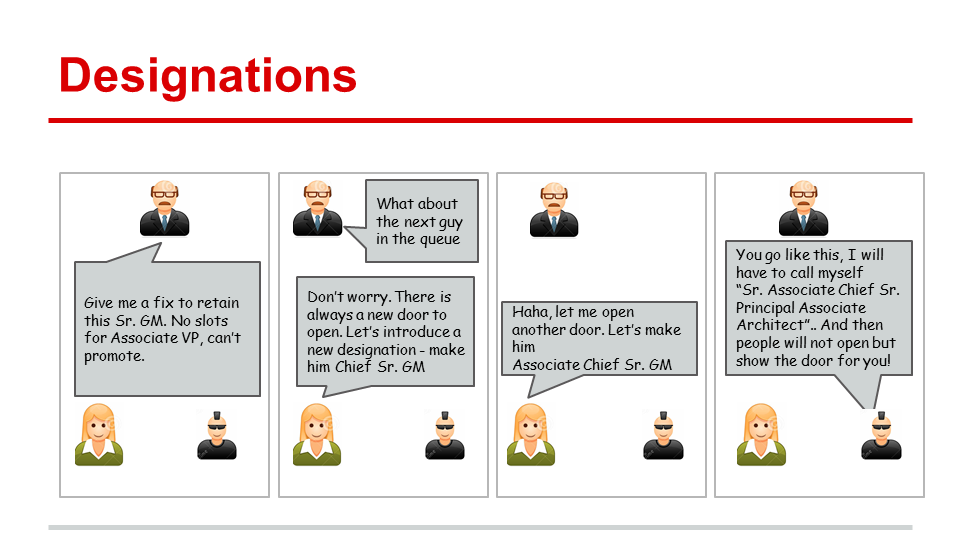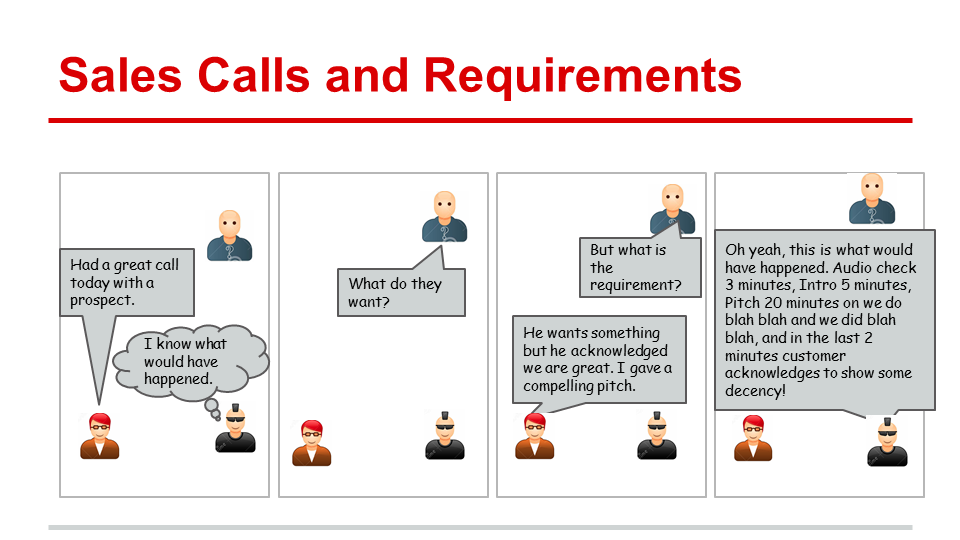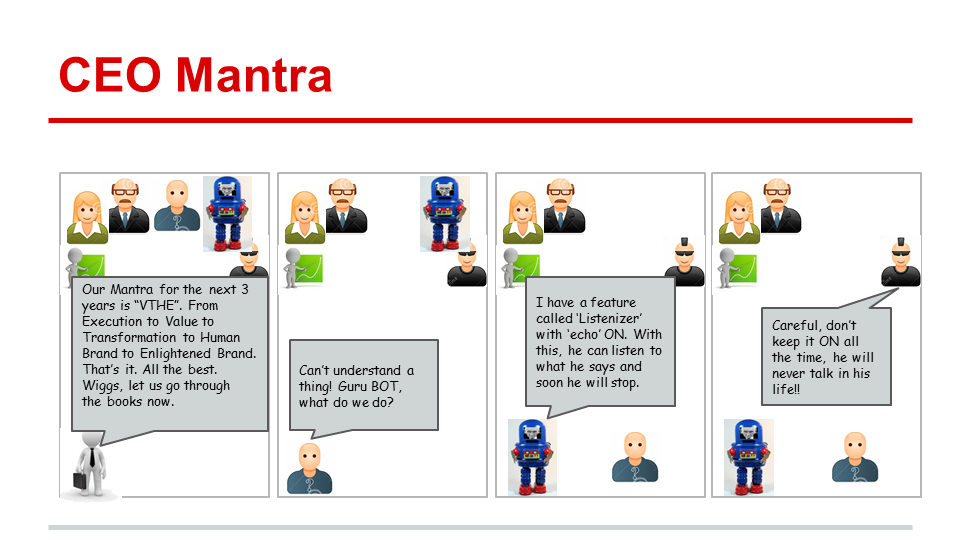| # | Title | Title-Word-1 | Title-Word-2 | Primary Category | Secondary Category | Other Categories |
| 1 | Ropes and Fears: The Tangible Symbols in ‘The Dark Knight Rises’ Prison Escape Scene! 🎥 | Ropes | Fears | Movies | Motivation | Metaphor, Psychology, Emotion |
| 2 | Change and Speed: Beyond Constancy! 🗣🧩 | Change | Speed | Trends | Motivation | Sociology, Industry |
| 3 | Inches and Opportunities: They Are Everywhere, Every Step Counts! 🎥 | Inches | Opportunities | Movies | Motivation | Psychology, Emotion, Metaphor |
| 4 | Emotion and Logic, Fast and Slow: Decoding Decision-Making Approaches of 4 Distinct Personalities! 🧩 | Emotion | Logic, Fast and Slow | Psychology | Personality Types | Framework, Decision Making |
| 5 | Past and Future: Echoes of Yesterday and Whispers of Tomorrow in KONGOS’ Tune! 🎶 | Past | Future | Music | Spirituality | Psychology, Philosophy |
| 6 | Attention and Detachment: Navigating Their Interplay for Genuine Listening! 🧩🗣 | Attention | Detachment | Communication | Psychology | Mindfulness, Philosophy |
| 7 | Expression and Empathy: Navigating Plutchik’s Wheel of Emotions – Pairs, Combinations, and Intensities! 🧩 | Expression | Empathy | Psychology | Emotion | Human Connection, Framework |
| 8 | Tappers and Listeners: The Rhythm of Misunderstanding! 🔬🧩 | Tappers | Listeners | Communication | Psychology | Cognitive Science |
| 9 | Serenity and Insight: The Revealed Journey in ‘Tomorrow Never Knows’ by The Beatles! 🎶 | Serenity | Insight | Music | Spirituality | Philosophy, Meditation, Peace |
| 10 | Logic and Emotion, Fast and Slow: Practical Examples of Buyer Profile-Targeted Content! 🧩 | Logic and Emotion | Emotion, Fast and Slow | Marketing | Personality Types | Psychology, Content Strategy, Framework |
| 11 | Quotes and Flips: Context and Pathways Shape Relevance! 🗣🧩 | Quotes | Flips | Communication | Motivation | Philosophy |
| 12 | Logic & Emotion, Fast & Slow: Practical Examples of Buyer Profile-Targeted Content Differences! 🧩 | Logic and Emotion | Fast & Slow | Marketing | Personality Types | Content Strategy, Psychology, Framework |
| 13 | Insight and Misinterpretation: Deciphering the Echoes of Timeless Wisdom! 📖🗣🧩 | Insight | Misinterpretation | Communication | Motivation | Scriptures, Philosophy |
| 14 | Joy vs. Sadness: Navigating the Emotional Landscape with Possible Actions!🧩 | Joy | Sadness | Psychology | Emotion | Framework, Human Connection |
| 15 | Love and Like: Dissecting Actions Through Plutchik’s Prism!🧩 | Love | Like | Psychology | Emotion | Relationships |
| 16 | Corporate and Colloquial: The Fun in Flexing Communication Styles!🧩 | Corporate | Colloquial | Business | Personality Types | Business, Language |
| 17 | Frost and Feelings: Unpacking the Snowman Metaphor in Music! 🎶 | Frost | Feelings | Music | Relationships | Metaphors, Emotion |
| 18 | Flattery and Critique: Navigating the Nuances of Feedback for Maximum Motivational Impact!🧩 | Flattery | Critique | Psychology | Communication | Motivation, Business |
| 19 | Emotional and Slow Thinking – Humanistic Buyer – Targeted Content – Analysis!🧩 | Emotional | Slow | Marketing | Personality Types | Psychology, Content Strategy, Framework |
| 20 | Rhythm and Roots: Melodies Bridging Modernity and Tradition! 🎶 | Rhythm | Roots | Music | Empowerment | Tradition, Modernity |
| 21 | Fear vs. Anger: Navigating the Emotional Landscape with Possible Actions!🧩 | Fear | Anger | Psychology | Emotion | Framework, Human Connection |
| 22 | Rap and Tap: Beats for the Moves, Words for the Soul, and Rhymes Full for Mind’s Roll! 🎶 | Rap | Tap | Music | Sociology | Culture, Lyrics |
| 23 | Resilience and Rebound: The Metaphor of Indestructibility in ‘Titanium’! 🎶 | Resilience | Rebound | Music | Motivation | Metaphor, Resilience |
| 24 | Emotion and Logic: Harmonizing Our ‘Why’ and ‘Who’ into elSpectra’s ‘What’ and ‘How’!🧩 | Emotion | Logic | Business | Business | Culture, Decision Making, Psychology, Framework, Branding |
| 25 | Meaning and Form: Art of Crafting a Company Name with a Handy Framework!🧩 | Meaning | Form | Business | Business | Culture, Decision Making, Psychology, Framework, Branding |
| 26 | Head and Heart: Making Decisions with Guru BOT’s Beat! 🤣 | Head | Heart | Humor | Technology | Decision Making, Business |
| 27 | Surprise vs. Anticipation: Navigating the Emotional Landscape with Possible Actions! 🧩 | Surprise | Anticipation | Psychology | Emotion | Framework, Human Connection |
| 28 | Masters and Partials: A Comic Perspective of Pre-Sales/Sales-Engineering! 🤣 | Masters | Partials | Humor | Sales | Pre-Sales, Business |
| 29 | Sociology and Causality: Unraveling Complex Behaviors through Interactive Learning and Reflection! 🗣 👨🏫🧩 | Sociology | Causality | Learning Methods | Sociology | Education, Communication |
| 30 | Pressure and Time: The Unyielding Forces of Transformation! 🎥 | Pressure | Time | Movies | Motivation | Metaphor, Transformation, Psychology |
| 31 | Comics and Corporates: Unveiling the Business Circus! 🤣 | Comics | Corporates | Humor | Business | Culture |
| 32 | Science-Tech and Human-Centric: My Hopes for an AI-Shaped Future! 🗣 🧩 | Science-Tech | Human-Centric | Trends | Technology | AI, Science |
| 33 | Wigs and Wisdom: When the Boss Treads the Path to Corporate Nirvana! 🤣 | Wigs | Wisdom | Humor | Business | Culture |
| 34 | Crystals and Fluid: The Yin and Yang of our Intellect and Application! 🧩 | Crystals | Fluid | Psychology | Cognitive Science | Intelligence, Learning Methods |
| 35 | Essence and Insights: Unveiling Distilled Intelligence for Optimized Cognition! 🧩 | Essence | Insights | Psychology | Cognitive Science | Intelligence, Learning Methods |
| 36 | Mantras and Mysteries: Navigating the Labyrinth of CEO Messages and Jargons! 🤣 | Mantras | Mysteries | Humor | Business | Culture, Communication |
| 37 | Passion and Patronage: Harmonizing Aspirations, Unwavering Support, and Bonds Born in Beats. 🥁🎶 | Passion | Patronage | Music | Gratitude | Mentorship, Inspiration, Drumming |
| 38 | Independent-Thinking and Fearless-Communication: Nurturing the Next Generation’s Minds! 🧩📖 | Independent-Thinking | Fearless-Communication | Learning Methods | Sociology | Education, Children, Communication, Empowerment |
| 39 | Stand-ups and Metrics: The Facade of False Agile Conformance! 🤣 | Stand-ups | Metrics | Humor | Technology | Agile |
| 40 | Insight and Transfer: Transdisciplinary Intelligence – Applying Cross-Domain Insights for Deeper and Innovative Problem Solving 🧩 | Insight | Transfer | Psychology | Cognitive Science | Intelligence, Learning Methods |
| 41 | Band and Mates: Learning, Laughing, and Jamming Through Covers, Our Brief Crescendo of Comradery! 🥁🎶 | Band | Mates | Music | Gratitude | Learning, Collaboration, Memories, Friendship |
| 42 | Chatter and Clatter: A Sales Talkathon for Nothing! 🤣 | Chatter | Clatter | Humor | Sales | Communication, Culture |
| 43 | Teacher and Student: Learning from AI’s Knowledge Distillation To Enhance Human’s Distilled Intelligence! 🧩 | Teacher | Student | Learning Methods | Cognitive Science | Education, AI, Intelligence |
| 44 | Strings and Sticks: My Amateur Crude Tune-Crafting Saga on GarageBand! 🎼 | Strings | Sticks | Music | Motivation | Learning, Technology, Memories |
| 45 | Strategy and Reality: Pitching Higher and Higher to go Lower and Lower! 🤣 | Strategy | Reality | Humor | Business | Strategy, Culture |
| 46 | Logical and Fast Thinking – Competitive Buyer – Targeted Content – Analysis! 🧩 | Logical | Fast | Marketing | Personality Types | Psychology, Content Strategy, Framework |
| 47 | Beats and Dreams: Drumming Back to Life with Hopes! 🥁🎶 | Beats | Dreams | Music | Motivation | Aspiration, Learning Methods |
| 48 | Designations and Ladders: Climbing the Never-Ending Title Tangle! 🤣 | Designations | Ladders | Humor | Career | Culture, Business |
| 49 | Discovering and Deciphering: The Art of Understanding through Conversations, Listening, and Documenting! 🧩 | Discovering | Deciphering | Learning Methods | Communication | Intelligence |
| 50 | Pose and Composure: Navigating the Replication Crisis in Psychology Experiments! 🔬🧩 | Pose | Composure | Psychology | Emotion | Experiments |
| 51 | Journey and Insight: Mapping the Path to Understanding Connections and Nuances! 🧩 | Journey | Insight | Learning Methods | Intelligence | Information Technology, Business, Framework |
| 52 | Clout and Craft: The Balancing Act of ‘Birdman’! 🎥 | Clout | Craft | Movies | Psychology | Decision-Making, Personality Types, Aspirations, Sociology |
| 53 | Payslips and Puzzles: Decoding the Deduction Dismay! 🤣 | Payslips | Puzzles | Humor | Finance | Culture |
| 54 | Emotional and Fast Thinking – Spontaneous Buyer – Targeted Content – Analysis! 🧩 | Emotional | Fast | Marketing | Personality Types | Content Strategy, Framework |
| 55 | LUI and MUI: The One Interface to Unify Enterprise Apps and Tasks! 👨💻 🧩 | LUI | MUI | Trends | Technology | Technology, Enterprise Software, Business |
| 56 | Teardowns and Assemblies: Navigating the Intricacies of Mobile-Devices & IoT Engineering! 🧩 📖👨💻 | Teardowns | Assemblies | Learning Methods | Intelligence | Engineering, IoT, Mobile Devices |
| 57 | Heroes and Humanity: Tracing Shadows, Redemption, and Gotham’s Soul in Dark Knight Trilogy! 🎥 | Heroes | Humanity | Movies | Motivation | Movies, Psychology |
| 58 | Ignorance and Bliss: Unveiling the Unexpected Virtues of Ignorance in Corporate World! 🤣 | Ignorance | Bliss | Humor | Business | Culture, Strategy |
| 59 | Adoration and Appreciation: The Heartbeats of Rock Band Fandom! 🎶 | Adoration | Appreciation | Music | Psychology | Culture, Fandom |
| 60 | Conversations and Continuity: Charting Love, Life, and Labyrinths Through Time! 🎥 | Conversations | Continuity | Movies | Relationships | Narrative, Dialogue, Psychology |
| 61 | Progress and Pain: The Unexpected Side Effects of Innovation! 🤣 | Progress | Pain | Humor | Innovation | Technology, Health |
| 62 | Logical and Slow Thinking – Methodical Buyer – Targeted Content – Analysis! 🧩 | Logical | Slow | Marketing | Personality Types | Content Strategy, Framework |
| 63 | Power and Psyche: Unraveling Ram Gopal Varma’s World Through His Possible Trio! 🎥 | Power | Psyche | Movies | Psychology | Directing, Character Study |
| 64 | Gadgets and Habits: A Dance of Unintended Moves! 🤣 | Gadgets | Habits | Humor | Innovation | Technology, Health |
| 65 | Maples and Oaks: Discord in the Forest! 🎶 | Maples | Oaks | Music | Sociology | Metaphor, Social Commentary |
| 66 | Digits and Delusions: A Playful Take on Paychecks! 🤣 | Digits | Delusions | Humor | Finance | Culture, Strategy |
| 67 | Intent and Intensity: Navigating Professional Dynamics! 🧩 | Intent | Intensity | Psychology | Business | Culture, Strategy |
| 68 | Composition and Mysticism: Deciphering Spiritual Nuances in ‘The Seeker’! 🎶 | Composition | Mysticism | Music | Spirituality | Philosophy |
| 69 | Stories and Twists: Navigating the Ever-Changing Agile Labyrinth and Team’s Confusions! 🤣 | Stories | Twists | Humor | Business | Agile, Culture |
| 70 | Societies and People: Unveiling the Socio-Crime-Cinematic Themes of a Korean, Bong Joon-ho! 🎥 | Societies | People | Movies | Sociology | Philosophy, Filmmaking |
| 71 | Trust vs. Disgust: Navigating the Emotional Landscape with Possible Actions! 🧩 | Trust | Disgust | Psychology | Emotion | Framework, Human Connection |
| 72 | Control and Loyalty: Mastering the Business Balance by Limiting Employee Choices. 🤣 | Control | Loyalty | Humor | Business | Culture, Management |
| 73 | Memories and Mirth: The Power of ‘Cheers’! 🎶🧩 | Memories | Mirth | Music | Emotion | Resilience, Nostalgia, Humor, Framework |
| 74 | Voyage and Vigor: Embracing the Lively Pulse of ‘Khalasi’! 🎶🕺 | Voyage | Vigor | Music | Motivation | Culture, Travel, Energy, Indian Music |
| 75 | Flat-Titles and Tremors: When Leaders Get a Shake-Up! 🤣 | Flat-Titles | Tremors | Humor | Leadership | Culture |
| 76 | Power and Peril: Delving into a Movie Trio’s Tale of Loyalty, Legacy, and Gangland Intrigue! 🎥 | Power | Peril | Movies | Sociology | Culture, Motivation |
| 77 | Desolation and Resilience: Navigating Through Life’s Shipwreck! 🎶 | Desolation | Resilience | Music | Motivation | Coping, Metaphor, Personal Growth, Psychology |
| 78 | Stars and Spreads: Balancing the A-Team Conundrum, for Good or Bad? 🤣 | Stars | Spreads | Humor | Business | Teamwork, Resource Allocation, Motivation |
| 79 | Submission (Fear + Trust) and Awe (Fear + Surprise): Navigating the Emotional Landscape with Possible Actions! 🧩 | Submission (Fear + Trust) | Awe (Fear + Surprise) | Psychology | Emotion | Framework, Human Connection |
| 80 | Performance and Hallyu (Korean Wave): The Global and Local (Glocal) Beat of K-pop! 🎶 | Performance | Hallyu (Korean Wave) | Music | Motivation | Culture, Modernity |
| 81 | Variables and Chokes: The Comedic Conundrum of Variable Pay! 🤣 | Variables | Chokes | Humor | Finance | Culture, Economics |
| 82 | Tracing and Comprehension: Learning Concepts through Systems Interactions and Business Process Workflows 🧩 | Tracing | Comprehension | Learning Methods | Business | Systems Thinking, Process Understanding, Framework |
| 83 | Cats and Love: Embracing the Purr of New Beginnings! 😺 ❤ | Cats | Love | Gratitude | Love | Family, Adoption, Emotion, Psychology |
| 84 | Blogs and Hits: When Honesty and Pep Talks Backfire! 🤣 | Blogs | Hits | Humor | Business | Culture, Communication |
| 85 | Disapproval (Sadness + Surprise) and Remorse (Sadness + Disgust): Navigating the Emotional Landscape with Possible Actions! 🧩 | Disapproval (Sadness + Surprise) | Remorse (Sadness + Disgust) | Psychology | Emotion | Framework, Human Connection |
| 86 | Digital and Self: A Pun at Transformation for Others or for Themselves! 🤣 | Digital | Self | Humor | Business | Transformation, Technology, Culture |
| 87 | Contempt (Anger + Disgust) and Aggressiveness (Anger + Anticipation): Navigating the Emotional Landscape with Possible Actions! 🧩 | Contempt (Anger + Disgust) | Aggressiveness (Anger + Anticipation) | Psychology | Emotion | Framework, Human Connection |
| 88 | Roles and Resourcefulness: Tailored Approaches to Team Leadership for Any Role! 🗣 | Roles | Resourcefulness | Gratitude | Leadership | Mentorship, Management, Culture |
| 89 | Gadgets and Giggles: A Comic Quirk for Character Development of Our Business Circus Stars with their Wearables! 🤣 | Gadgets | Giggles | Humor | Technology | Culture |
| 90 | Melody and Mayhem: The Soulful Symphony of Rock Ballads! 🎶 | Melody | Mayhem | Music | Motivation | Culture, Emotion, Art |
| 91 | Undercurrents and Undertones: Charting the Undercover, the Unsaid, and the Unseen (Spies and Moles)! 🎥 | Undercurrents | Undertones | Movies | Psychology | Espionage, Trust, Deception, Motivation |
| 92 | Proactiveness and Demands: Treading the Fine Line – With Whom and Where? 🤣 | Proactiveness | Demands | Humor | Business | Culture, Initiative |
| 93 | Symbolism and Storytelling: Liberty, Equality, and Fraternity Unfolded in Kieślowski’s Tricolore – The French Flag’s Blue, White, and Red! 🎥 | Symbolism | Storytelling | Movies | Psychology | Metaphor, Philosophy, Human Connection |
| 94 | Music and Fanfare: A Resounding Celebration of Art, Adulation, and Fan Devotion! 🎥🎶 | Music | Fanfare | Music | Movies | Motivation, Culture, Entertainment, Fandom |
| 95 | Search and Surprise: Unintended Revelations in the Digital Age! 🤣 | Search | Surprise | Humor | Technology | Privacy, Digital Life, Discovery |
| 96 | Being Present and Overthinking: Exploring Personalities and Conversations Through Examples! 🧩 | Being Present | Overthinking | Psychology | Cognitive Science | Personality, Reflection, Daily Life |
| 97 | Sagas and Sequencing: Tarantino’s Timeless Cinema Tapestry! 🎥 | Sagas | Sequencing | Movies | Motivation | Storytelling, Directing, Innovation |
| 98 | Action and Style: ‘Vikram’ as a Single-Genre Action Odyssey! 🎥 🎶 | Action | Style | Movies | Motivation | Action, Filmmaking, Choreography, Soundtrack, Music |
| 99 | Guidance and Gratitude: Statements by People in My Life That Shaped and Are Shaping My Path! 🗣 | Guidance | Gratitude | Gratitude | Vision | Mentorship, Leadership, Inspiration, Life Lessons |
| 100 | Music and Echoes: A Symphony of Ilaiyaraaja and Rahman Through the Years! 🎶 | Music | Echoes | Music | Motivation | Inspiration, Soundtracks, Nostalgia |




























